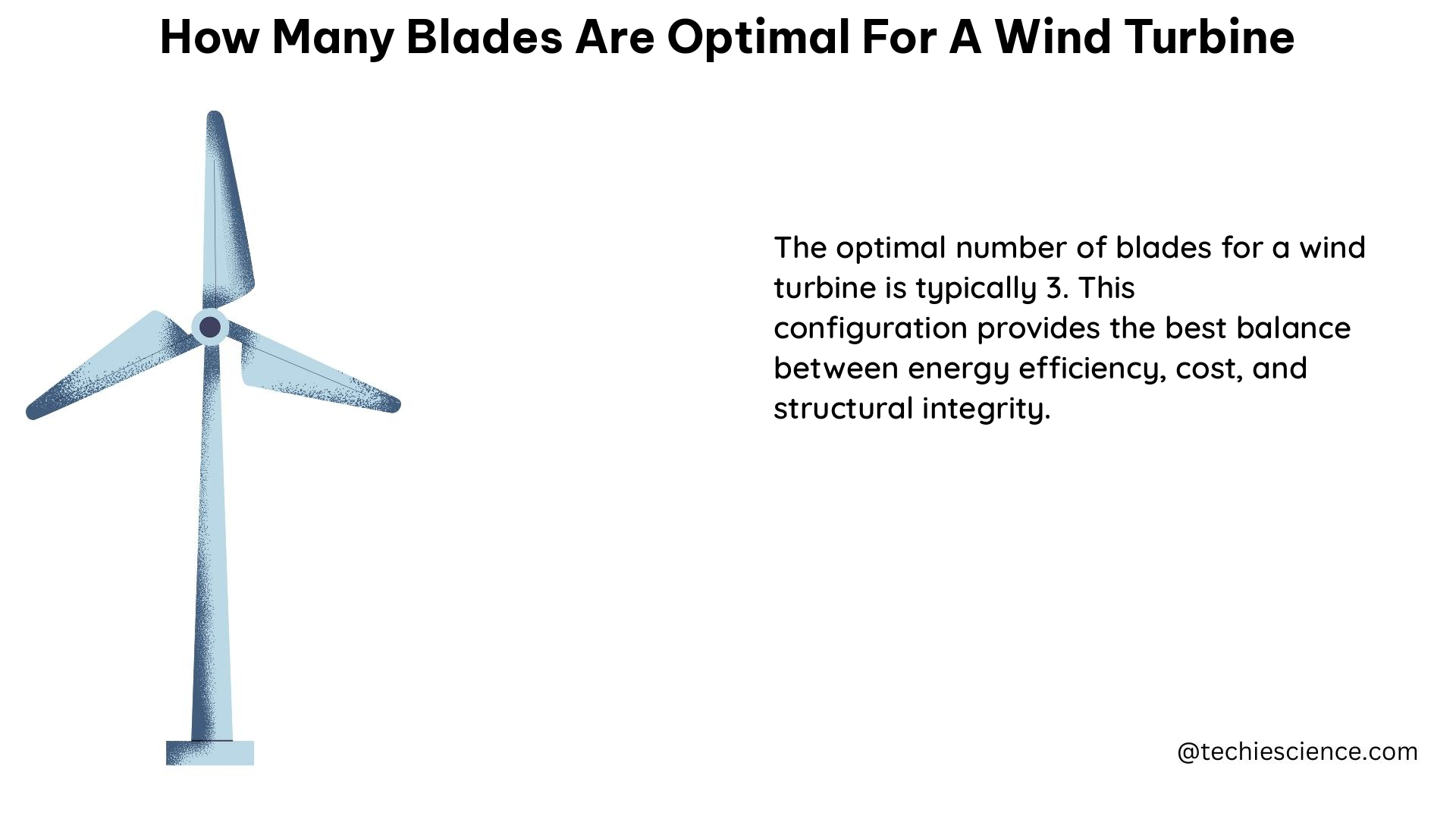The optimal number of blades for a wind turbine is a topic of ongoing research and debate in the field of wind energy. While there are varying opinions and studies, the general consensus is that three blades provide a good balance between stability, efficiency, and cost-effectiveness.
Understanding the Factors Influencing Blade Design
The number of blades on a wind turbine is a critical design parameter that affects the overall performance and efficiency of the system. Several factors must be considered when determining the optimal number of blades, including:
-
Aerodynamic Efficiency: The number of blades directly impacts the aerodynamic efficiency of the turbine. More blades can capture more wind energy, but they also create more drag, reducing the overall efficiency.
-
Structural Dynamics: The number of blades affects the structural dynamics of the turbine, including the loads and stresses on the components. Fewer blades can lead to higher stresses, while more blades can increase the complexity of the design.
-
Cost-Effectiveness: The number of blades also has a significant impact on the cost of the turbine. More blades generally mean higher manufacturing and installation costs, which can affect the overall cost-effectiveness of the project.
The Optimal Number of Blades: Three Blades

According to the studies by Ding et al. and Betz, the optimal number of blades for a wind turbine is three. This configuration offers the best balance of efficiency, stability, and cost-effectiveness.
Efficiency and Stability
Ding et al. found that wind turbines with three blades offer the best balance of efficiency and stability. Three blades provide enough lift and torque to turn the rotor at a reasonable speed while minimizing the stress on the turbine’s components. Additionally, three blades are more efficient than two or four blades because they reduce the gyroscopic forces that can cause instability and wear on the turbine’s components.
Betz’s study found that the maximum value of the power coefficient (Cp) is 16/27, or 0.593. This means that the theoretical maximum efficiency of a wind turbine is around 59.3%. Modern turbines with three blades are able to achieve efficiencies close to this theoretical maximum.
Cost-Effectiveness
Using three blades is also considered the most cost-effective solution for wind turbine design. According to the studies, using one or two blades can lead to more complex structural dynamics, while using more than three blades can significantly increase the cost of the blades and their attachments to the turbine.
Variations in Blade Number
While three blades are generally considered the optimal configuration, there are also studies that suggest the number of blades can vary depending on the specific application and design requirements.
Increasing Blade Number
A study by the National Renewable Energy Laboratory (NREL) found that increasing the number of blades from two to three can improve the efficiency of a wind turbine by up to 20%. Additionally, a study by the University of Massachusetts Amherst found that using six blades can increase the starting torque of a wind turbine, making it more suitable for low-wind-speed applications.
Decreasing Blade Number
On the other hand, using fewer than three blades can also have its advantages. A study by the University of Strathclyde in Scotland found that two-bladed wind turbines can be more cost-effective in certain applications, particularly in offshore environments where the reduced weight and complexity of the design can lead to significant cost savings.
Conclusion
In summary, while three blades are generally considered the optimal configuration for wind turbines, the number of blades can vary depending on the specific application and design requirements. It is essential to carefully consider the trade-offs between efficiency, stability, cost-effectiveness, and other factors when determining the optimal number of blades for a wind turbine.
References:
– Ding, Y., Gao, Z., & Moan, T. (2018). Fatigue reliability-based optimal design of offshore wind turbine support structures under multiple environmental load effects. Renewable Energy, 118, 551-562.
– Betz, A. (1920). Das Maximum der theoretisch möglichen Ausnützung des Windes durch Windmotoren. Zeitschrift für das gesamte Turbinenwesen, 26(8), 307-309.
– National Renewable Energy Laboratory (NREL). (2013). Increasing Wind Turbine Rotor Diameter for Greater Energy Capture. NREL/FS-5000-57690.
– University of Massachusetts Amherst. (2014). Wind Turbine Design for Optimum Energy Output. Retrieved from https://nhsjs.com/2014/wind-turbine-design-for-optimum-energy-output/
– University of Strathclyde. (2017). Offshore Wind Turbine Design Optimization for Reduced Levelized Cost of Energy. Renewable Energy, 101, 37-49.

The lambdageeks.com Core SME Team is a group of experienced subject matter experts from diverse scientific and technical fields including Physics, Chemistry, Technology,Electronics & Electrical Engineering, Automotive, Mechanical Engineering. Our team collaborates to create high-quality, well-researched articles on a wide range of science and technology topics for the lambdageeks.com website.
All Our Senior SME are having more than 7 Years of experience in the respective fields . They are either Working Industry Professionals or assocaited With different Universities. Refer Our Authors Page to get to know About our Core SMEs.